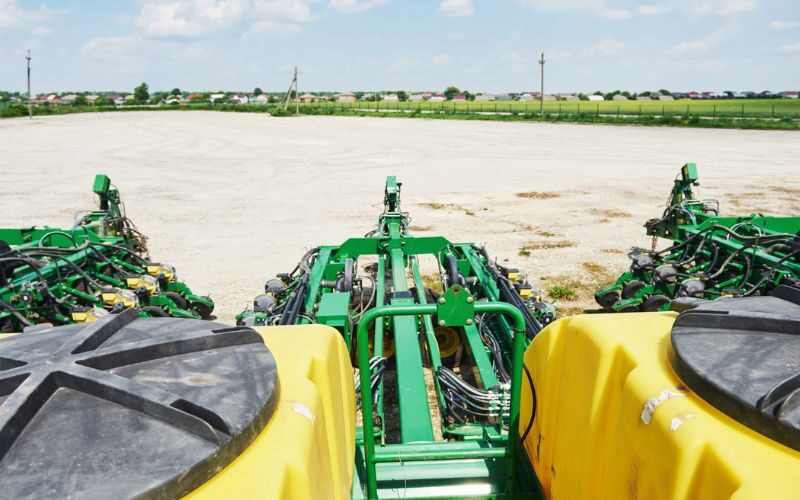In the age-old dance between humankind and nature, agriculture stands as one of our most enduring partnerships. From ancient civilizations to modern societies, the cultivation of crops has been essential for sustenance, commerce, and civilization itself. However, as our population burgeons and resources dwindle, the pressure intensifies to maximize crop yields sustainably. Enter the Yield Booster – a revolutionary tool poised to transform crop production as we know it.
The Challenge of Crop Yield
Feeding a global population that’s projected to reach 9.7 billion by 2050 is no small feat. Traditional agricultural practices, though effective in their time, face mounting challenges. Climate change brings erratic weather patterns, water scarcity, and the spread of pests and diseases, all of which threaten crop yields. Moreover, arable land is diminishing due to urbanization and soil degradation, amplifying the urgency for innovative solutions.
Yield Booster For Crop Production
In the quest for sustainable food security, researchers and farmers are turning to cutting-edge technologies, and one such innovation taking center stage is the Yield Booster. At its core, this technology comprises a suite of techniques and tools designed to optimize every aspect of crop production, from planting to harvest.
Precision Agriculture: Targeting Efficiency
Precision agriculture forms the backbone of the Yield Booster approach. By leveraging data analytics, remote sensing, and GPS technology, farmers can tailor their actions to the specific needs of each plant and plot of land. Soil sensors measure moisture levels and nutrient content, enabling precise irrigation and fertilization strategies. Drones equipped with multispectral cameras provide real-time insights into crop health, allowing early detection of pests, diseases, and nutrient deficiencies. This targeted approach not only maximizes yields but also minimizes input waste, promoting sustainability.
Genetic Advancements: Breeding Success
Another key component of the Yield Booster toolkit is genetic innovation. Traditional breeding methods, while effective, are time-consuming and often yield unpredictable results. Enter biotechnology and genetic engineering, which offer unprecedented precision and speed in crop improvement. Scientists can now identify and manipulate specific genes responsible for desirable traits such as drought tolerance, disease resistance, and higher yields. Through techniques like CRISPR-Cas9, they can precisely edit the plant’s DNA, accelerating the breeding process and unlocking new possibilities for crop productivity.
Smart Farming: Automation and Integration
The Yield Booster revolution extends beyond the field to encompass the entire farming ecosystem. Smart farming technologies automate repetitive tasks, streamline operations, and enhance decision-making. Robotic equipment, equipped with AI algorithms and sensors, can plant seeds, apply pesticides, and harvest crops with unparalleled efficiency. Integrated farm management software consolidates data from various sources, offering farmers actionable insights to optimize resource allocation, mitigate risks, and maximize profitability. By embracing automation and connectivity, farmers can achieve higher yields while reducing labor costs and environmental impact.
Sustainable Practices: Nurturing Resilience
Central to the ethos of the Yield Booster movement is a commitment to sustainability. Conventional agriculture often comes at a steep environmental cost, depleting soil fertility, polluting waterways, and contributing to greenhouse gas emissions. In contrast, the Yield Booster emphasizes regenerative practices that replenish rather than deplete natural resources. Conservation tillage minimizes soil disturbance, preserving its structure and organic matter. Cover crops reduce erosion, suppress weeds, and enhance soil health. Agroforestry integrates trees into agricultural landscapes, providing shade, windbreaks, and additional revenue streams. By embracing these sustainable practices, farmers can safeguard the long-term viability of their operations while mitigating climate change and preserving biodiversity.
Real-world Impact: Empowering Farmers, Nourishing Communities
The true measure of any agricultural innovation lies in its real-world impact on farmers’ livelihoods and food security. The Yield Booster has the potential to transform smallholder agriculture, empowering farmers with the knowledge, tools, and resources to thrive in an ever-changing world. Increasing yields and incomes lift families out of poverty, reduce hunger, and foster economic development in rural communities. Moreover, by producing more food with fewer resources, it bolsters food resilience, ensuring that communities can withstand shocks and crises.
Challenges and Opportunities Ahead
While the promise of the Yield Booster is undeniable, realizing its full potential requires overcoming various challenges. Access to technology, particularly in developing regions, remains a barrier for many farmers. Addressing concerns around data privacy, intellectual property rights, and environmental impact is essential to garnering widespread acceptance. Moreover, as with any disruptive innovation, there are ethical considerations regarding genetic engineering, automation, and the concentration of power in the hands of a few agribusiness giants.
Conclusion
In the grand tapestry of human history, agriculture has been a constant thread, weaving together civilizations and sustaining life itself. As we stand on the cusp of a new agricultural revolution, the Yield Booster offers hope amid mounting challenges. By harnessing the power of technology, genetics, and sustainability, we can unlock new frontiers in crop production, nourishing both people and the planet for generations to come. The journey ahead may be fraught with obstacles. Still, with innovation, collaboration, and a steadfast commitment to our shared future, we can cultivate a world where abundance, equity, and sustainability flourish.





 Locate Us
Locate Us